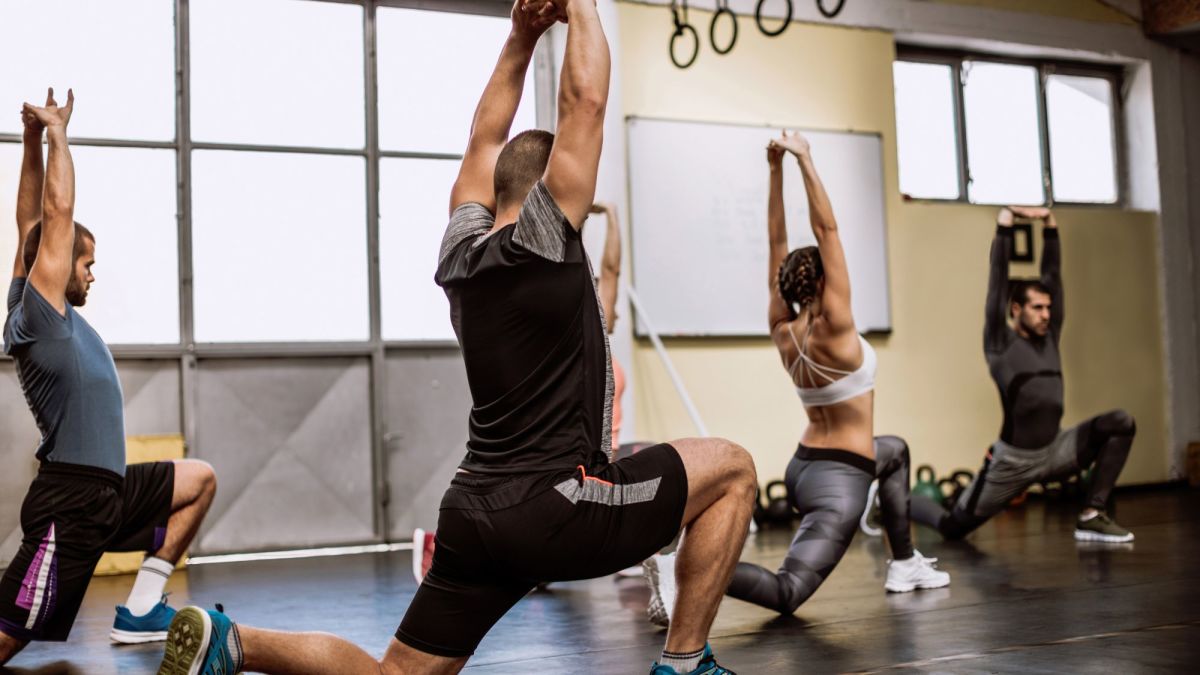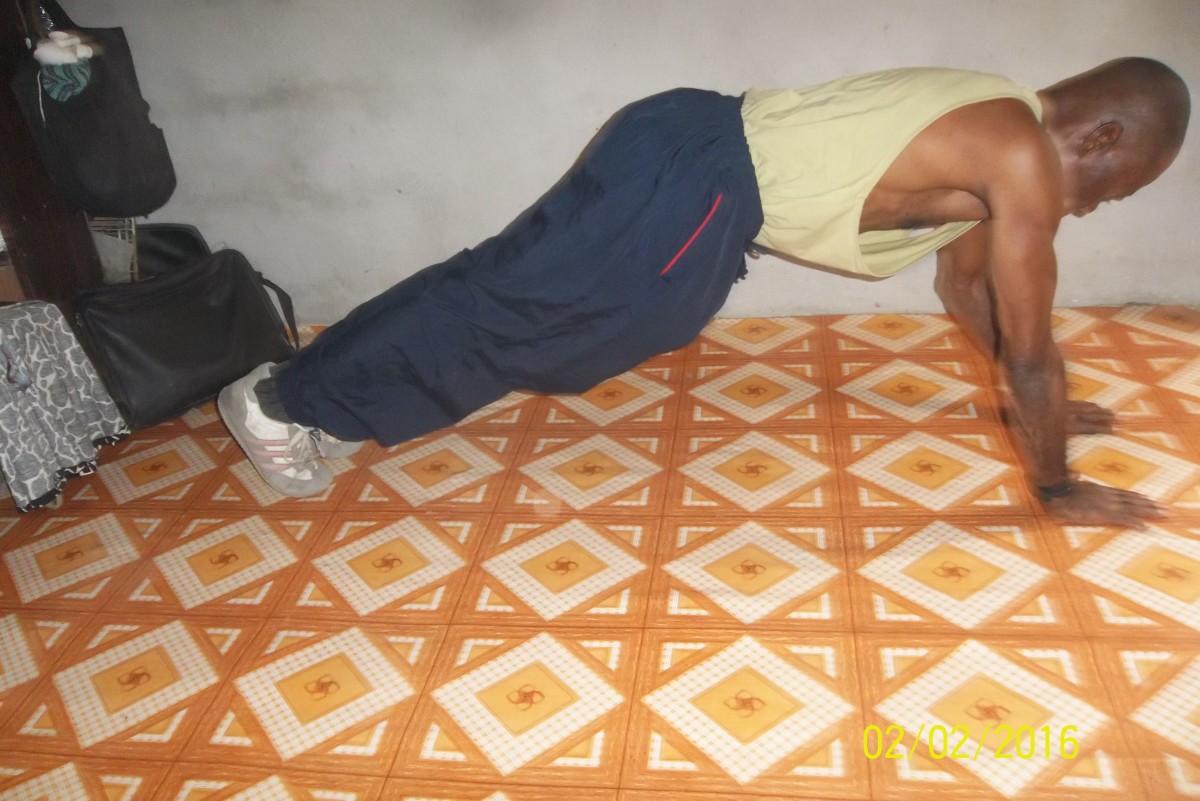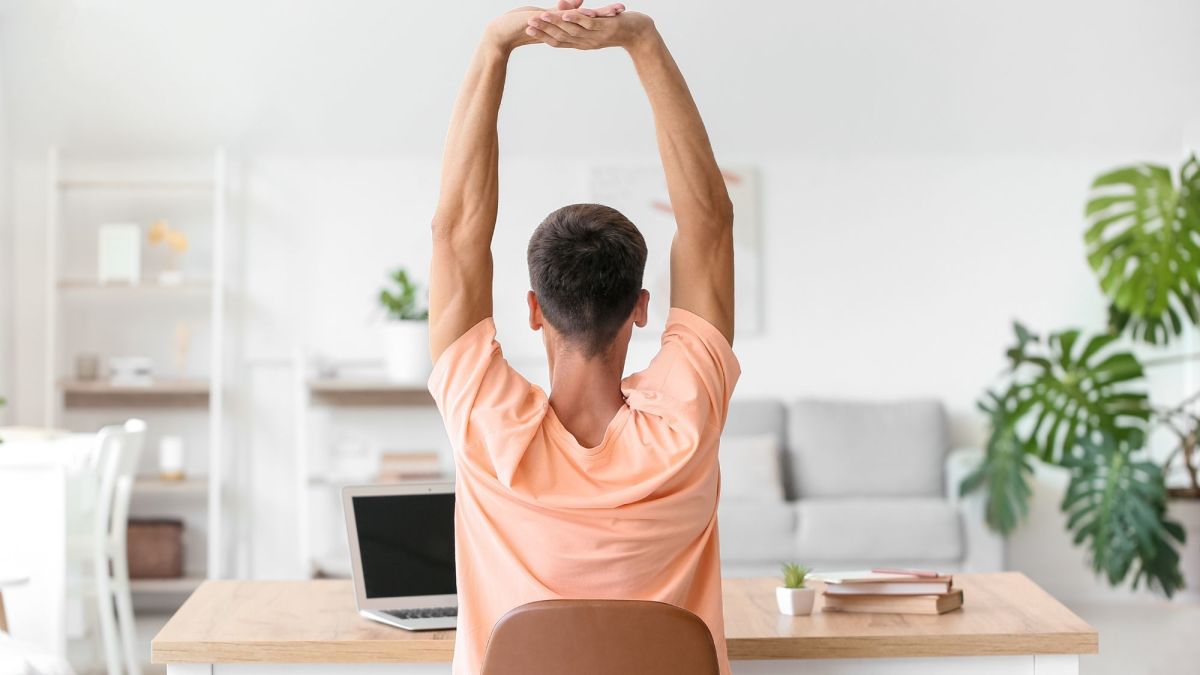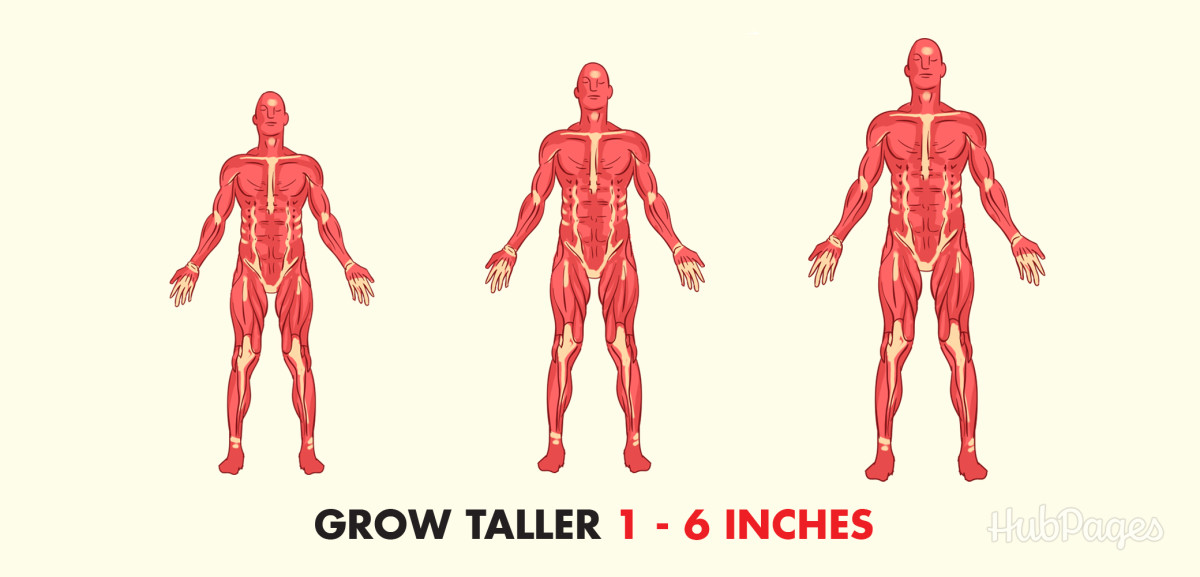Seven Essentials for Stretching
Stretching our muscles should be a daily routine. Sadly too many of us ignore our bodies until our bodies are hurting and then it becomes either therapy or a drudgery. Stretching should be no different than our daily personal hygiene. Our muscles are critical to our very existence and those seeking independent living can attest to the importance of the 600 and more muscles that operate our body.
The Many Benefits of Stretching
Stretching not only improves appearance, lengthens muscles, and gives that lean, toned look on stage, but it also improves fitness and health. It is the ultimate for preventing injuries.
The best way to learn to stretch is with a personal trainer who can customize your fitness program and the stretches your body needs. Time and money are obstacles that sadly prevent us from learning from a fitness professional. To get you on the right road on your stretches, here are seven essential that you must be aware of for your personal stretching program.
Seven Tips for Stretching
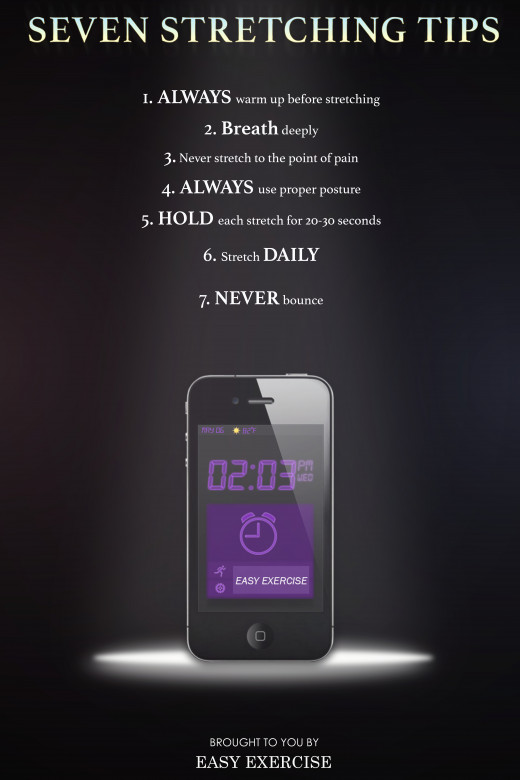
How Long to Stretch
The American College of Sports Medicine (ACSM 2006) recommends holding a stretch from 15 to 30 seconds.
When to Stretch - 2 Rules
Nothing about stretching is difficult. Fundamental to good health is stretching. When to stretch is perhaps the easiest question to answer, and it should comes as no surprise, we need to stretch daily - before and after your daily exercise routine.
- Daily
- Before and After Exercise
So the logical question that must be asked is simply this: Why no prescription for stretching in the medical environment? Good question. I believe our medical community is missing a critical component for wellness. Every hospital patient should be doing stretching exercises. Even patients who are bedridden can stretch. Ankle twists are not just childlike fun, they are easy and critical for walking. To leave these important muscles out is neglectful.
We brush our teeth daily and yet our muscles can languish? Oh, I am being sarcastic now - please forgive me but this point bothers me when I visit medical centers. I feel for the patients' well being. I know the importance of stretching but most importantly, I can feel and see the results of daily stretching.
Exercise Poster - Run Lift Stretch
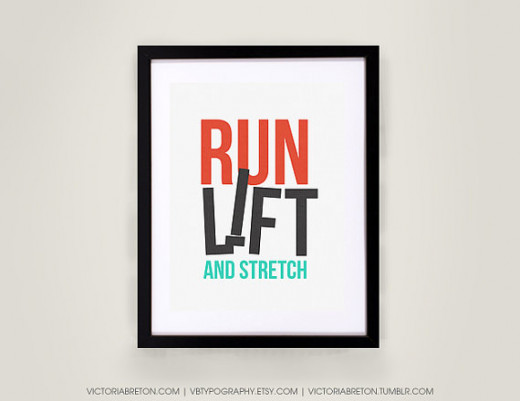
Stretch to Stay Safe Funny Poster - Keep Fit to Stay Safe
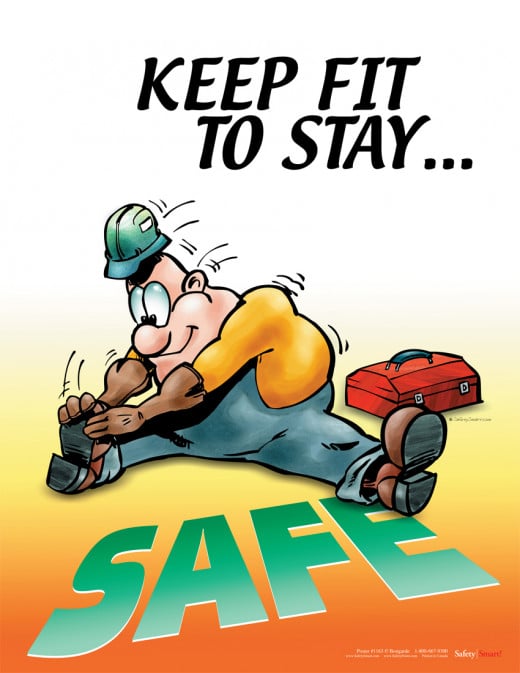
Workplace Safety But No Posters for Hospital Wellness
Don't you find it amazing, we have been fighting obesity worldwide, have identified health care costs are a national problem here in the United States and yet there are no daily stretches for hospital patients.
As of this writing, I cannot find guidance on simply stretching posters for bedridden patients. And yet, we know we need these muscles for work, so why wouldn't we take the time to prepare the patients' muscles for eventual release into the real world where they will need to care for themselves?
Where are the posters to encourage simply ankle twists and other non-resistance exercises for patients?
Share Your Opinion
Do you feel hospitals should have posters to encourage daily stretching?
Unless Injured or Rehabilitating - Stretch with Resistance
Our muscles want to be activated. Just as humans love attention and love to be heard, your muscles will thank you with daily stretches that really stretch not just move. Use your body, your hand, a wall or a friend and add some light resistance to your stretching routine.
Caution: As with all exercise programs, do consult your physician especially if you have inactive or if you have been challenged with a disease or injury.
"Don't stretch with exuberance, save exuberance for your own Great Gatsby love story. Stretch simply with resistance where you feel your muscles activated. Never stretch to the point of pain."
Easy Exercise
Snatching a Wisp of Air
"The point here is "snatching a wisp of air" should be left to save a fragment or a memory such as proclaimed so elegantly by F. Scott Fitzgerald in The Great Gatsby, Stretching should have nothing to do with air (unless you are bedridden). Stretching needs resistance. Use your hand, use a wall, use gravity, use a friend, hire a personal trainer but stretch with resistance."
Easy Exercise
How to Stretch - With Resistance
In the world acclaimed love story written by F. Scott Fitzgerald, in the book that was successfully made into a movie (what three times?), The Great Gatsby, the man who deceived Daisy into believing he was from the same economic stratosphere, who went on to become one of the wealthiest and most powerful men in the world, fell in love with Daisy and during one of the many poignant points in the book stated: "He stretched out his hand desperately as if to snatch only a wisp of air, to save a fragment." For you see the love story was remarkable and it made for a great movie but the writing was also superb.
The point here is "snatching a wisp of air" should be left to save a fragment or a memory, Stretching should have nothing to do with air (unless you are bedridden). Stretching needs resistance. Use your hand, use a wall, use gravity, use a friend, hire a personal trainer but stretch with resistance.
Don't stretch with exuberance, save exuberance for your own Great Gatsby love story. Stretch simply with resistance where you feel your muscles activated. Never stretch to the point of pain.
Types of Streching
"Just as there are different types of flexibility, there are also different types of stretching. Stretches are either dynamic (meaning they involve motion) or static (meaning they involve no motion). Dynamic stretches affect dynamic flexibility and static stretches affect static flexibility (and dynamic flexibility to some degree).
The different types of stretching are:
- ballistic stretching
- dynamic stretching
- active stretching
- passive (or relaxed) stretching
- static stretching
- isometric stretching
- PNF stretching"
source: Types of Stretching
Dynamic and Static Stretching
"Dynamic stretching is usually done at the beginning of an exercise program after a proper warmup, while static stretching is usually performed after exercising. Dynamic stretches closely mimic movements made during exercise, so they're usually used to prepare for athletic events. Static stretches are used to improve flexibility and cool your body down after you exercise, and are therefore done when the body is standing still."
source: Dynamic Stretching Versus Static Stretching
What is Stretching?
OK, this is the hard part. For you see stretching can be many different things. The "How" and the "When" are the simple parts. The what is stretching depends entirely upon your needs. If you are injured the purpose of stretching will be dramatically different from athletic stretching for a sport. The type of sport will change your stretching needs. A gymnast needs different stretches from a runner, from a football player and even golfers need different stretches.
Start simply with your stretching program. Join a group fitness class and the instructor will provide to you the basics. Incorporate these basics into your daily routine. You will find different stretches will affect you differently dependent upon your fitness level. That is just one of the many marvelous miracles of daily stretching. You will feel your body differently. Your perception of your body will change. You will feel your muscles speak to you.
Stretching for Stress Relief
Just as stretching should be designed specifically for your sport and your individual needs, stretching for stress relief is completely different and often will concentrate upon different muscle groups.
One of my favorite stretches is simply a stress reliever, the neck roll. One of my participants in my class, openly advised me she had no stress and wondered why I had us doing this stretch. Imagine no stress! Oh, I live in a different world don't I?
Types of Stretches - A Science Unto Its Own
The science of stretching is fascinating but is beyond the scope of this article. What is important to know is that there are many different types of stretches and not all stretches are helpful and some stretches may actually be harmful. The take away here is to consult a professional for your stretching program. This is always true but if you have had an injury, it is especially critical for you to consult with your physician.
Not All Stretches Were Created Equally - Take Care
"PNF and isometric stretching are not recommended for children. So all stretches are not created equal. This sends an important message, that stretching is a prescription that is best done with an end goal in mind for the specific person." Easy Exercise
PNF Stretching
PNF Stretching is "proprioceptive neuromuscular facilitation" is said to be the most efficient type of stretching to increase flexibility. It is best done with a partner. It is a combination of passive and isometric stretching.
Interestingly, PNF and isometric stretching are not recommended for children. So all stretches are not created equal. This sends an important message, that stretching is a prescription that is best done with an end goal in mind for the specific person.
"Passive stretching is usually performed with a partner who applies a sustained stretch to a relaxed joint. It requires close communication between client and trainer, along with a slow application of the stretch in order to prevent a forceful manipulation of the body segment and possible injury. The client is not actively involved in the stretch."
source: IdeaFit
Len Kravitz, PhD
Energizing Red Exercise Poster Focusing Upon Stretching
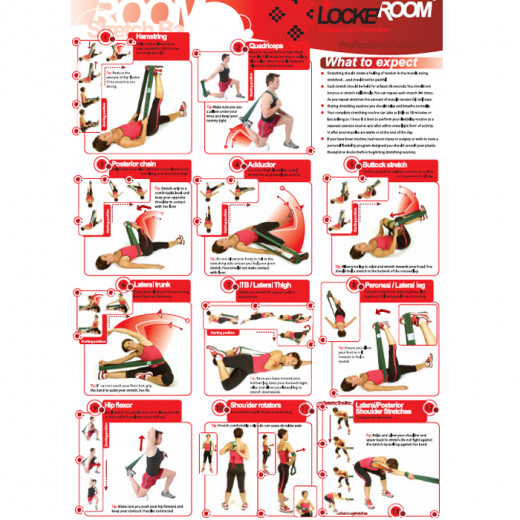
"It is important for every sport to stretch your hamstring."
Scooby Werkstatt
"You can get away without stretching any muscle in your body with the exception of the hamstring."
Scooby Werkstatt
Scooby goes on to state that it is important to stretch the hamstring in order to prevent back pain.
Hamstring Stretches - Preventing Back Pain
The Importance of Stretching Your Hamstring
Here we have talked about the importance of daily stretching but we haven't cover the one muscle group that we must stretch for sports and the one muscle group that we must stretch in order to prevent back pain. Scooby Werkstatt states, "It is important for every sport to stretch your hamstring." He also goes on to say very concisely and directly: "You can get away without stretching any muscle in your body with the exception of the hamstring."
Hamstring Stretch Video To Prevent Back Pain by Scooby Werkstatt
If you have ever had back pain (and who among us hasn't?), you must watch this insightful video about stretching our hamstrings. Scooby Werkstatt very concisely shows you the correct way to stretch for the beginner and then he gives a bonus of the advanced hamstring stretch. Scooby doesn't stop there, he then showcases the stretches that are wrong and explains why these stretches are wrong.
If you watch the video, you will learn:
- Beginner's hamstring stretch.
- Advanced hamstring stretch.
Horrible Ways to Stretch - Learn the Wrong Way - To Avoid:
- Grab toes
- Standing hamstring stretch - bouncing hamstring - recipe for injury
- Worst hamstring stretch
Tips: Feel the stretch, hold for 30 seconds.
Check Your Knowledge on Stretching - Take Our Quiz
If you watched the video by Scooby Weskstate closely, you will have gained invaluable pointers. Take this quiz and see if you were able to capture his words of wisdom on stretching.
Check Your Knowledge on Scooby's Video on Stetching
view quiz statisticsStretching Techniques
Stretching Techniques
In this vido, Dave Scott, Active.com triathlon expert and six-time Ironman World Champion, guides us through stretching techniques for more a more effective workout.
"Seek a Comfortable Stretch Not a Painful Stretch."
Dave Scott, Six-time Ironman World Champion
If you watch this video Dave will guide you through six different stretches and most importantly Dave will tell you what muscles you are stretching.
Stretching Techniques Demonstrated with Six Stretches
1. Lying Leg Cross Over - Feel the Tension on the Glute
2. Hip Flexor Stretch - Great for Runners
3. Perfect Periformis Hip Glute Stretch
4. Partner Hamstring Stretch
5. Partner Quad Stretch
6. Partner Shoulder Back Lat Pec Stretch
Motivational Posters for Stretching Exercise
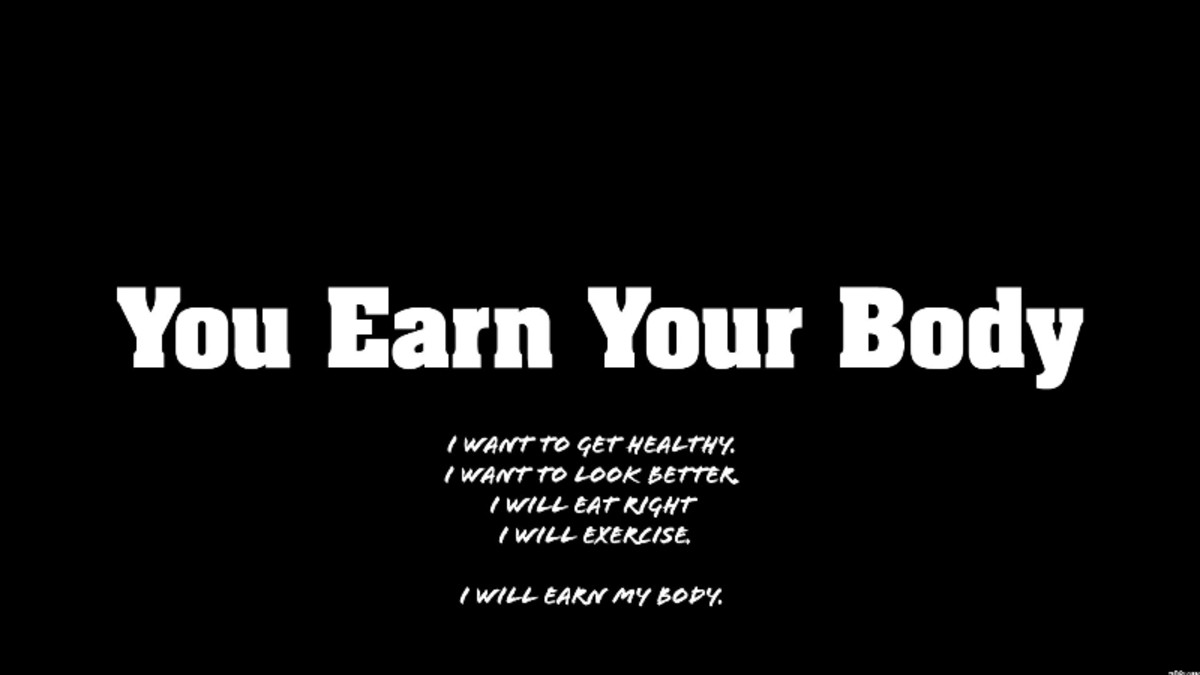
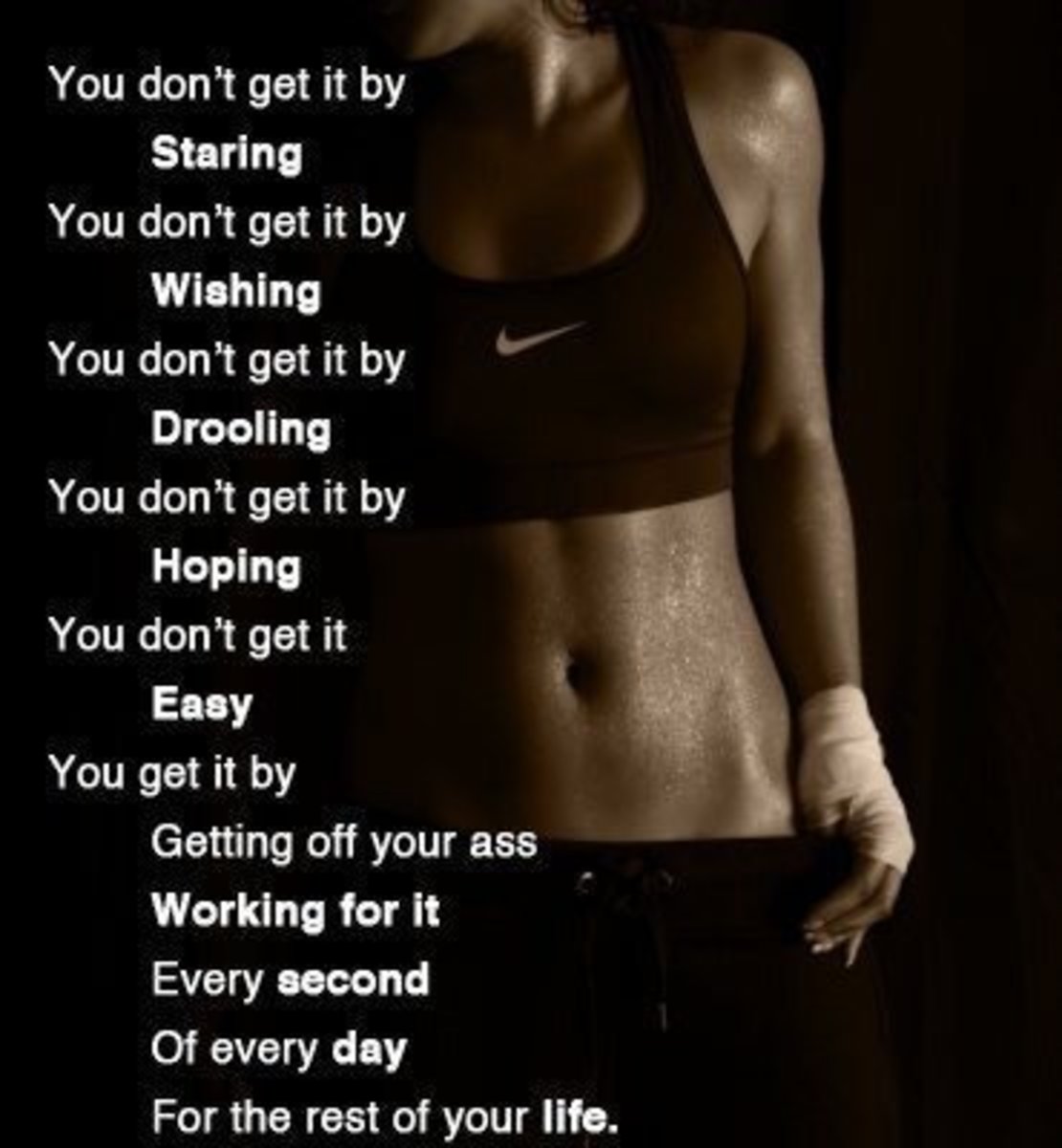
Take Our Poll on Daily Stretching
Do you stretch daily?
Seven Stretching Tips
1. Always warm up before stretching
2. Breath deeply
3. Never stretch to the point of pain
(Unless injured, incorporate stretches with resistance)
4. Always use proper posture
5. Hold each stretch for 20-30 seconds
6. Stretch daily
7. Never bounce
Seven Stretching Tips Recap
Stretching is similar to exercise, we have not been taught to stretch daily. When I was growing up and yes, I too learned all the "wrong" stretches from the 1970s and also I didn't learn the importance of the hamstring on our back, let alone the importance of stretching daily. We brush our teeth daily, we text daily, we watch television daily but we should really make a point of stretching daily.
The important point is not just to motivate you to stretching daily, but stretching in a manner that counts. Cheating in stretching can actually harm us not help. To avoid injury we must not roll our back - always maintain proper posture. Also bending our knee serves as a waste of valuable time. Learn how to stretch in order to use your time well and you will not only feel better but also avoid injury.
Take the time today to take on a new daily habit but most importantly, learn the proper techniques to: 1.) avoid wasting your time and 2.) avoid injury.
Share Your Stretching Experience
Please share with us what stretching means to you. Do you believe stretching should be encouraged in hospitals? In the workplace? Or just at home?
This content is accurate and true to the best of the author’s knowledge and does not substitute for diagnosis, prognosis, treatment, prescription, and/or dietary advice from a licensed health professional. Drugs, supplements, and natural remedies may have dangerous side effects. If pregnant or nursing, consult with a qualified provider on an individual basis. Seek immediate help if you are experiencing a medical emergency.
© 2014 Kelly A Burnett

